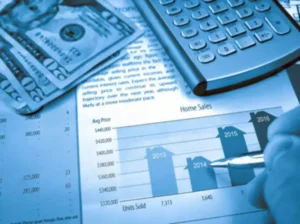Content

Leverage can be a relevant tool to finance restaurant growth, and many chains are able to find sustainable ways to use restaurant loans. In the restaurant industry, the median Debt Ratio as resulting from balance sheets (debt as a percentage of assets) for U.S. traded companies (public and OTC) is 0.70 – meaning debt is equivalent to 70% of total assets. With interest rates still bookkeeping for restaurants at historically low levels, it is a good time to assess options for financing the business, obtaining new lines of credit, and refinancing (or evaluating existing or potential partnerships). The time period covered in the cash flow statement needs to be accompanied by the income statement, operations, and balance sheet to fully grasp the restaurant’s financial position.
- Restaurant financial statements are formal documents that summarize the business activities of a restaurant.
- When the right components are combined within a platform, the whole can be much greater than the sum of its parts (and this is reflected in valuations).
- Written exclusively for
restaurant operators, in a jargon free and easy to understand style. - So, three critical components of balance sheets are – assets, liabilities, and equity.
Plate IQ offers you the ability to automate your accounting systems and seamlessly integrate with your platform of choice. Usually, the report sorts invoices into 30, 60, 90, or 120 days outstanding. It’s not technically a financial document, in that it’s not something being reported to authorities and investors. By law, public companies must file quarterly reports as well as annually. The best part is that you can use this for any type of restaurant facilities, such as coffee shops, bars, and alike.
Restaurant Types
If your sales volume is on target for the month, then your food purchases should also be on track. This tool will let you know if purchases are in line with budget so that you can deal with it before over-purchasing becomes a problem. And, it is helpful for double-checking what the accounting department says you have spent on food when they produce your food cost report. The number they have for food purchases should be very close to what you have documented in the declining balance sheet has for a total. Also known as statements of financial position, restaurant balance sheets provide a quick snapshot of the organization’s financial health. By monitoring these metrics, you can compare your business to industry targets or monitor different experiments you may be running.
- This combination of cost-saving and selling high can increase your revenue dramatically and avoid issues like excess inventory.
- Using restaurant balance sheets with profit & loss statements helps you understand your business’s current financial health and discover opportunities to grow revenue.
- Those who are not often defer
collecting and recording numbers to someone else, and do not really understand
what the numbers are telling them. - While supporting with both buy-side and sell-side mandates we’ve seen that valuation multiples can actually be increased during the holding period.
- At this rate, debt repayment would take close to three years (assuming all EBITDA is applied to debt repayment).
- It
preyed on my mind so much that several months later I asked him if he ever got
the inventory completed.
Restaurant finances show that pre-crisis, the debt-to-EBITDA ratio for the U.S. restaurant industry sat at 2.7x (as a median, based on public companies). At this rate, debt repayment would take close to three years (assuming all EBITDA is applied to debt repayment). The most susceptible companies are those in the Casual Dining segment that were hit in the last recession had relied on financial engineering to stay afloat for the last decade. A lot will depend on the category, the company, and the value proposition. We expect a silver lining to come in Q3 for operators and investors who can weather the storm through the balance of Q2.
How To Create A Restaurant Balance Sheet: Example & Template
They represent returns on total equity reinvested back into the restaurant. 2) Restaurant Sales Forecast & Projection Template – use this if you need to create up to 5 years of financial projections including a balance sheet, cash flow statement, and profit and loss. Like any other business, restaurants also need to track their performance, profit & loss, and stay on top of their finances.

These are, broadly, the costs involved in people producing and serving food at the restaurant, including payments to food preparation workers, cooks, servers, first-line supervisors, and managers. In the U.S. the average hourly wage has been consistently climbing since 2011 and it’s close to $16/hour as of 2021. Many restaurant chains have learned the importance of tracking https://www.bookstime.com/articles/what-is-a-virtual-accountant food commodities the hard way, when disease or a shortage of a particular commodity have sent prices soaring. In 2013, for instance, Darden saw its food and beverage costs rise six percent (outpacing an increase in sales) in the wake of a disease affecting Asian shrimp. In restaurants, F&B costs or COGS (Cost of Goods Sold) typically represent about 30% of sales.
Hiring Employees vs. Temps vs. Contractors for Restaurants
A 298 page step-by-step guide to the most
popular small business accounting software program. Written exclusively for
restaurant operators, in a jargon free and easy to understand style. The author,
John Nessel, a thirty-six year veteran of the restaurant industry, and
currently a restaurant consultant, is a Certified QuickBooks Advisor, and has
been using QuickBooks since 1994. If you’re planning to use financial statements to find ways to grow your restaurant business, you’ll need to optimize how you create them.
The restaurant cash flow statement provides data on cash receipts and payments of the operating, investing, and financial activities of a restaurant for a stated period of time. A restaurant balance sheet shows assets, liabilities, and equity to reveal a restaurant’s financial position on a given date. The income statement, or P&L, shows revenue, expenses and summarizes a restaurant’s finances over a stated period of time. Another key metric recorded in your cash flow statement is your debt and financing, as taking on debt or financing assets will change cash flow. For example, an increase in debt could mean an increase in cash since you are gaining cash from something like a loan or waiting to pay cash on an accounts payable. A decrease in debt can mean a decrease in cash because you are paying off a liability.
Restaurant
Earnings Per Share are another way to measure restaurant profit margins. U.S. publicly traded restaurant companies have a median basic Earnings Per Share of $1.0 (as of 2017). The top quartile, however, reaches more than twice as much, and some companies -like limited service Domino’s, Chipotle, McDonald’s, and Casual Dining Cracker Barrel and Biglari Holdings have EPS higher than $5. The difference between 2017 maximum (Biglari Holdings with an EPS of $40.8) and minimum (Dine Brands with an EPS of -$18.3) was close to $60. For every $100 dollar invested in assets, restaurant chains in the U.S. and Asia generate more than $8 in EBIT (earnings before interest and taxes) as a median. The effectiveness for generating profit margins is not as high in Europe, where the Basic Earnings Power is $5 (per $100 invested in assets).
What are some issues that the balance sheet can reveal about a restaurant?
The Balance Sheet can show how much debt the restaurant has in terms of unpaid employee tips, state tax liabilities, operating costs, and loans. Knowing how much debt you have is important because it can impact your ability to grow.
